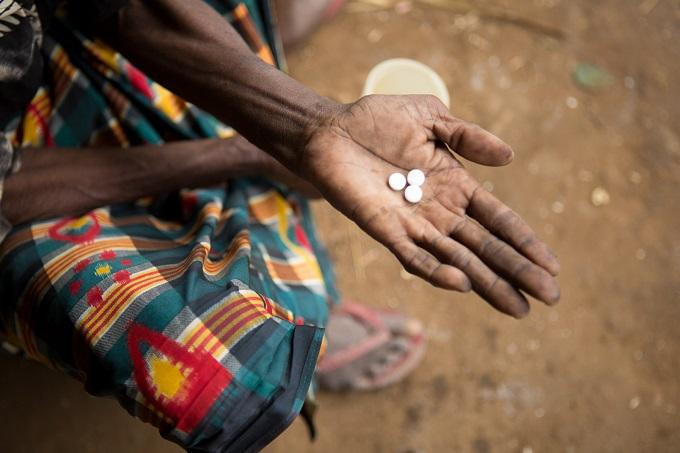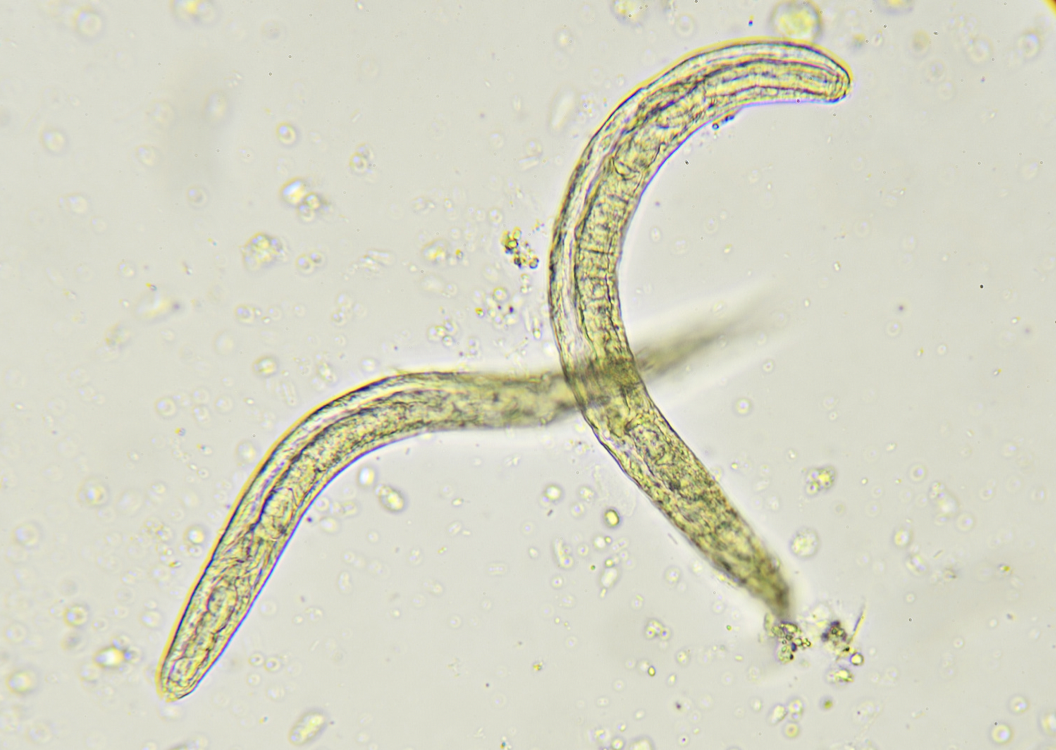Definition
Trichuriasis is an infection caused by the whipworm parasite (Trichuris trichiura). It is one of the most common parasitic worm infections, along with ascariasis and hookworm infection. The size of the whipworm varies, typically ranging from 3 to 5 cm. Roughly a quarter of the world's population is estimated to carry this infection, primarily in tropical climates of Asia, as well as in Africa and South America, albeit in lower percentages. This worm infection occurs more frequently in regions with poor hygiene and sanitation, and it predominantly affects children, who are particularly vulnerable to parasitic infections.
Causes
Trichuriasis is caused by an infection of the Trichuris trichiura parasite, also known as the whipworm. This worm is named for its whip-like shape, wider at the front and tapering towards the tail end. Female worms lay eggs that are deposited in soil contaminated with human feces or soil fertilized with human waste. These eggs then develop into larvae and embryos in the soil. The eggs capable of infecting humans are those that have developed into embryos after 15-30 days. Subsequently, the eggs enter the body through hands contaminated with soil or by consuming less clean food.
Once inside the body, the eggs hatch, and the larvae emerge in the small intestine. The larvae grow using nutrients from the intestinal flora and become adults in the colon. Adult worms embed their heads into the colon wall and feed on substances produced by the tissue, not blood. Female adults lay eggs approximately 60-70 days after infection, producing between 3,000 and 20,000 eggs per day. Typically, adult worms can survive for up to one year.
Risk factor
The risk factor for trichuriasis infection is living or visiting areas with poor hygiene and sanitation levels, which are typically found in developing countries. This disease usually occurs more frequently in children due to lower levels of cleanliness and their tendency to unintentionally ingest soil. Boys are more susceptible to this infection compared to girls because they tend to be more active and may accidentally ingest soil more often. Moreover, regardless of gender, children experience more severe infections compared to adults.
Symptoms
Most cases of trichuriasis do not cause symptoms. Symptoms typically appear after the individual has a severe infection, usually in heavily exposed children or adults. The symptoms are usually limited to the gastrointestinal tract, such as unexplained abdominal pain, watery bowel movements at night, and bloody stools, especially in individuals infected by more than 200 worms.
In severe to very severe cases, symptoms such as the protrusion of the large intestine from the anus (rectal prolapse), failure to thrive, cognitive developmental disorders, and in extremely severe infections, individuals may experience symptoms of anemia. Anemia symptoms can include pallor, but if the infection persists for a long time, individuals may experience clubbing of the fingers. Failure to thrive and cognitive developmental disorders usually occur in children due to iron deficiency and insufficient nutritional intake as a result of the worm infection.
Diagnosis
Diagnosis initially involves asking about the patient's medical history and any risk factors for the disease. Further examination can include assessing for signs of failure to thrive and inspecting for the protrusion of the colon from the anus. A growth chart provided by health organizations such as the WHO or CDC can be used to assess growth in children.
Laboratory tests are then conducted to look for evidence of infection. A complete blood count can indicate an increase in the level of white blood cells, especially eosinophils, which are a type of white blood cell in the body. Additionally, in severe infections, this test may reveal a low level of hemoglobin in red blood cells, indicating anemia. Another test involves examining stool samples under a microscope. Typically, the stool will contain elongated worm eggs shaped like barrels with flat ends. Besides worm eggs, red blood cells and white blood cells may also be found in the stool. Counting eggs in the stool can be done using specific techniques. Other tests may include polymerase chain reaction (PCR) to detect the presence of worms.
Imaging tests for this condition include ultrasonography (USG) and endoscopy. Ultrasonography can detect the presence of the appendix or continuous movement of the appendix due to a large number of worms. Endoscopy involves inserting a tube with a camera at the end through the anus to examine the condition of the lower large intestine and the end of the small intestine. During endoscopy, worms can be found embedded in the walls of the large intestine.
Management
The management of trichuriasis involves administering anthelmintic drugs. These medications can be taken once or for a duration of 3 days, depending on the specific medication. If multiple worm infections occur simultaneously, patients may be prescribed several types of medications. Typically, patients receive outpatient treatment, but inpatient care may also be necessary if there are abnormalities in the intestines or severe anemia. Household members of the patient have a low risk of transmission because the lifecycle of the worms may not be fulfilled to cause an infection. However, if the household lacks adequate waste disposal facilities, transmission is more likely. Children with poor nutritional status will be referred to the nutrition department for further management.
If anemia is severe, blood transfusion may be necessary, preceded by blood typing and crossmatch tests to ensure compatibility with the transfused blood. Additionally, if there are abnormalities in the intestine, such as rectal prolapse, the patient may require surgery to reposition the colon and ensure its secure placement.
Complications
The rate of recovery from trichuriasis is generally worse compared to other worm infections because the worm is more resilient to drugs. However, a low number of worms does not typically cause symptoms. Many patients with trichuriasis experience inflammation of the large intestine (colitis) and disorders in nutritional absorption (malabsorption). This nutritional absorption disorder typically affects fat-soluble vitamins, namely vitamins A, D, E, and K. Other complications in severely affected children include failure to thrive and the protrusion of the large intestine from the anus.
Another potential complication that may be observed early on is Trichuris dysentery syndrome. This condition occurs when there is an excessive number of worms in the intestine and is more commonly found in children. Symptoms may include diarrhea, a constant urge to defecate (even immediately after defecation), iron deficiency anemia, and slow growth due to nutritional deficiencies.
Prevention
Trichuriasis is a preventable disease. Generally, household infections are rare. Transmission often occurs when infected individuals defecate on soil or when human stool is used as fertilizer. Screening can be conducted within households to detect infections even in the absence of symptoms. Prevention of infection is primarily achieved by improving personal hygiene and providing adequate waste disposal facilities. Enhancing and repairing waste disposal systems for an area can also be accomplished through collaboration with local governments to prevent transmission. Additionally, in areas with high infection rates, it is advisable to wash vegetables and fruits carefully, as there is a possibility of worm eggs adhering to them.
When to see a doctor?
It's important to consult a doctor if you or your children experience any symptoms of trichuriasis, such as watery bowel movements at night, bloody stools, abdominal pain, or the protrusion of intestinal tissue from the anus. Additionally, if your child is not growing as expected, it's advisable to seek advice from the nearest healthcare professional. While these symptoms may indicate trichuriasis, they could also be signs of other conditions, such as nutritional deficiencies due to inadequate intake or other illnesses.
Looking for more information about other diseases? Click here!
- dr Hanifa Rahma
CDC - DPDx - Trichuriasis (2017). Retrieved 3 January 2022, from https://www.cdc.gov/dpdx/trichuriasis/index.html.
Donkor, K. (2018). Trichuris Trichiura (Whipworm) Infection (Trichuriasis): Background, Pathophysiology, Epidemiology. Retrieved 3 January 2022, from https://emedicine.medscape.com/article/788570-overview#showall.
Viswanath, A., Yarrarapu, S., & Williams, M. (2021). Trichuris Trichiura. Retrieved 3 January 2022, from https://www.ncbi.nlm.nih.gov/books/NBK507843/.












